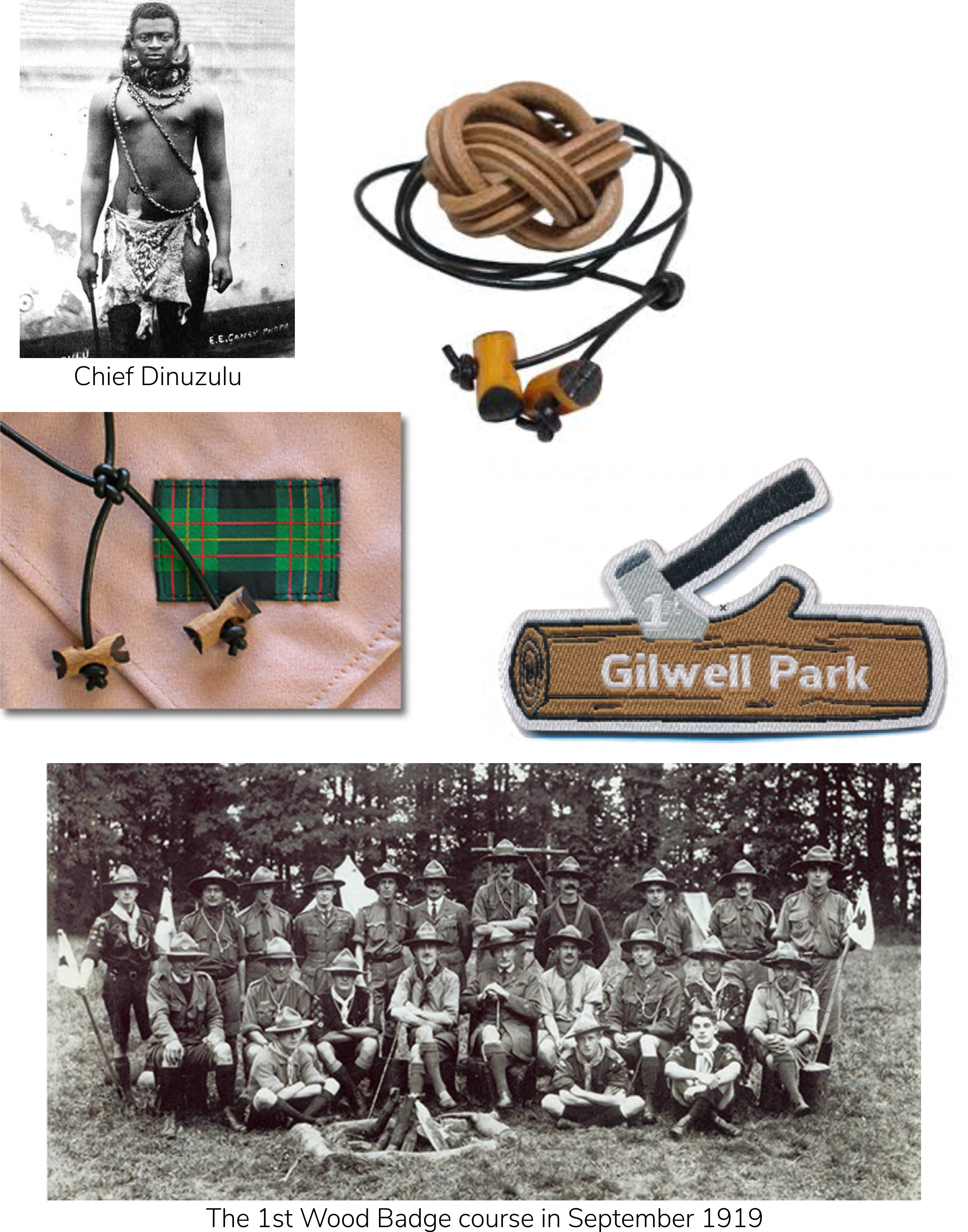The history of our training insignia…
Since September 1919 adult volunteers in the scouts have been awarded the Wood Badge on the completion of their leader training. The basic badge is made up of two wooden beads worn at the end of a leather lace. This iconic symbol of scouting has become shrouded in myths and its origins and development confused.
The Wood Badge
In 1887 Baden-Powell was posted to Cape Town, South Africa shortly after his arrival trouble broke out with the Zulu warriors, led by their Chief Dinzulu.
On state occasions, Dinzulu wore a necklace some 12 feet in length consisting of over a thousand Acacia beads. It was considered sacred by the warriors, and there was a belief that if ever captured all resistance by the natives would cease. The necklace was kept in a cave, high on a mountain and guarded day and night.
Baden-Powell heard of this and shortly after the relief of Mafeking he found the Zulu chieftain's necklace in his deserted mountain stronghold and took it home to England where he kept it with his other military souvenirs.
On the morning of 8th September 1919, 19 men dressed in short trousers and knee socks, their shirt sleeves rolled up, assembled for the first Scoutmasters' training camp at Gilwell Park. The camp was designed and run by Baden-Powell. At the end of the course B-P sought a distinctive award for the participants and wondered what to give them to signify passing the course. He went home and while rummaging through his collection he came across Dinzulu's necklace and a leather thong. A few days later he presented each of the leaders that attended the course with two beads from the necklace and instructed them to buy a bootlace and tie a bead to each end and hang it around their hat.
The Scoutmasters' training course was a great success and continued to be held year after year. Wood Badge recipients now number more than hundreds of thousands and can be found in all corners of the world.
The first sets of beads issued were all from the original necklace, but the supply soon ran short. So, one exercise on the early courses was to be given one original Acacia bead and be told to carve the other from hornbeam or beech.
The Gilwell Woggle
Up until the 1920s Scout scarves had always been tired with a knot. So far as it is known, the name "woggle" was invented by Francis Gidney, the first Camp Chief of Gilwell Park.
In the early days of leader training, fire lighting by friction was very much a novelty and for many years was demonstrated on Wood Badge courses. To do this the main piece of equipment was a length of leather thong.
Using one of the fire lighting thongs, Bill Shankley, who was at the time a volunteer at Gilwell, produced a two strand Turk's head slide that was adopted as the official "Gilwell woggle".
1st Gilwell Park Scout Group neckerchief
Members of the 1st Gilwell Park Scout Group are entitled to wear the Gilwell Scarf. The Scarf is coloured a pinkish-dove grey, the colour of humility, on the outside and warm red on the inside to signify warmth of friendship. On the apex of the Gilwell scarf is a small patch of Maclaren tartan to remind us of the fine gesture by Mr DeBois Maclaren in providing the money to purchase the original land for Gilwell Park. Originally, the neckerchief was made entirely of triangular pieces of the tartan, but its expense forced the adoption of the current design. The dove grey material is a registered cloth, which means it cannot be used for any other purpose, nor may it be modified or any additions made to it.
1st Gilwell Park Scout Group
All Wood Badge holders around the world automatically belong to the 1st Gilwell Park Scout Group, the largest Scout Group in the world. The Group itself is a strange one as it does none of the things that a good Scout Group should do. The Group Scout Leader is Baden-Powell in perpetuity, It meets once a year at the annual Gilwell Reunion and then its attendance is small in numbers compare to its membership, most of its members are never able to visit the Group Headquarters – The Group Room in the White House, Gilwell Park, it has no committees, no programme, in fact it has very little, and yet its communion, none would dispute, is tremendous and its members are proud to be members however far away they may be from their Group Headquarters.
